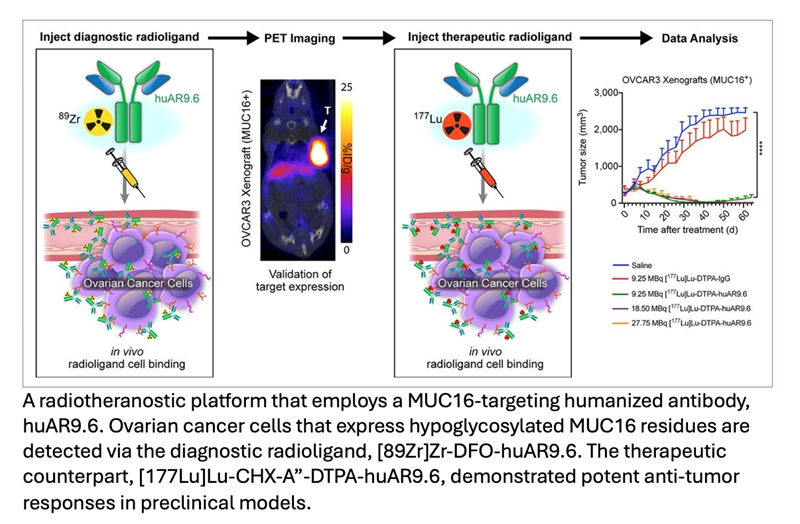Theranostic Tool Detects, Treats Ovarian Cancer Noninvasively
 A new radiotheranostic system provides the ability to detect and treat ovarian cancer noninvasively, according to research published in The Journal of Nuclear Medicine. Combining the highly specific huAR9.6 antibody with PET and therapeutic radionuclides, this theranostic platform may provide more personalized treatment to improve health outcomes for ovarian cancer patients.
A new radiotheranostic system provides the ability to detect and treat ovarian cancer noninvasively, according to research published in The Journal of Nuclear Medicine. Combining the highly specific huAR9.6 antibody with PET and therapeutic radionuclides, this theranostic platform may provide more personalized treatment to improve health outcomes for ovarian cancer patients.
Ovarian cancer causes more deaths than any other gynecologic malignancy, with a five-year survival rate below 30 percent for patients diagnosed at advanced stages. The current standard of care for ovarian cancer consists of surgery followed by platinum-based chemotherapy; however, these methods have failed to increase overall survival rates in patients because of tumor recurrence and chemoresistance.
“Current serum-based biomarkers do not sufficiently detect all occurrences of early-stage ovarian cancer,” stated Jason Lewis, PhD, Chief Attending of Radiochemistry and Emily Tow Chair at Memorial Sloan Kettering Cancer (MSK) in New York, New York. “Therefore, there is a critical need for both additional detection methods and new targeted therapies that can improve patient survival.”
Studies have shown that the MUC16 protein is overexpressed in ovarian cancer patients, with elevated levels correlating with disease stage and tumor volume. The antibody huAR9.6 binds to a unique epitope that is influenced by truncated carbohydrate residues on MUC16. Thus, the authors noted, MUC16 could be a potential target for tumor detection via immuno-PET imaging and treatment with radioimmunotherapy.
In the study, the diagnostic radiotracer 89Zr-DFO-huAR9.6 was investigated in vitro and in vivo via binding experiments, immuno-PET imaging, and biodistribution studies on ovarian cancer mouse models. In addition, ovarian xenografts were used to determine the safety and efficacy of the therapeutic radionuclide, 177Lu-CHX-A″-DTPA-huAR9.6.
MUC16 proteins were successfully detected via immuno-PET imaging with 89Zr-DFO-huAR9.6. In vivo studies showed that 89Zr-DFO-huAR9.6 could effectively specify varying levels of MUC16 expression in ovarian cancer mouse models. Radioimmunotherapy studies with 177Lu-CHX-A″-DTPA-huAR9.6 demonstrated improved overall survival and strong antitumor responses in highly MUC16-expressing models. Hematologic toxicity was also determined to be transient in mice treated with 177Lu-CHX-A″-DTPA-huAR9.6.
“Immuno-PET imaging of MUC16 with this radiotheranostic pair may allow for noninvasive diagnosis and treatment monitoring of ovarian cancer lesions in patients,” said Kyeara Mack, PhD, postdoctoral fellow in the Lewis Lab at MSK. “This theranostic platform may be used to stratify and select patients who would benefit from the targeted radioimmunotherapy. In addition, it could also play a significant role in early ovarian cancer detection.”